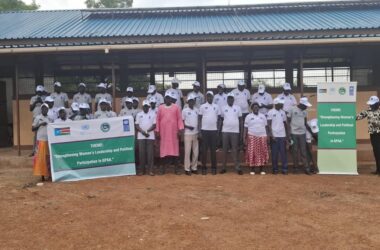By staff writer
Greater Horn of Africa will likely have severe rainfall due to the El Nio climatic phenomena, the IGAD Climate Prediction and Applications Centre (ICPAC) has warned.
In a climate forecast for October to December 2023 released yesterday, ICPAC predicts wetter-than-usual conditions across most parts of the Greater Horn of Africa.
According to the report, southern Ethiopia, eastern Kenya, and southern Somalia are expected to experience over 80% of wetter-than-usual rainfall, while isolated areas of southwestern Uganda and southwestern South Sudan may experience drier conditions.
It said as a result of heavy rainfall from March to May 2023, there is an increase in precipitation from October to December 2023, potentially contributing to flooding.
Dr Guleid Artan, ICPAC Director warned that El Niño conditions which, for Eastern Africa, are synonymous with wetter conditions during October, November and December (OND).
“After three years of devastating drought, this may be seen as a blessing for farmers. Still, it can quickly become a curse. Desert locusts are already proliferating to alarming levels in parts of the region,” he said.
He said the risk of deadly incidents also increases significantly, urging governments and disaster management agencies to take all necessary measures to save lives and livelihoods.
For his part, Dr Hussen Seid, Climate Modelling Expert at ICPAC, explained that El Niño is a climate phenomenon characterized by the periodic warming of sea surface temperatures in the central and eastern equatorial Pacific Ocean.
“Its effects can influence weather patterns worldwide. Another significant phenomenon known as the Indian Ocean Dipole is developing over the Indian Ocean and will reinforce the El Niño impacts,” he added.
October to December is a vital rainfall season, particularly in the equatorial parts of the Greater Horn of Africa, contributing 20-70% of the annual total rainfall.
It said the start of the season is likely to occur early in areas where elevated rainfall is anticipated, while probabilities favour an average or delayed onset over parts of northern Somalia, western Kenya, Uganda, southern South Sudan, Rwanda, Burundi, and north-western Tanzania.
ICPAC, a designated Regional Climate Centre for Eastern Africa by the World Meteorological Organization, uses a combination of historical data, climate signals, and advanced modelling techniques to forecast seasonal conditions.
For OND 2023, the consolidated objective temperature forecast from nine Global Producing Centers (GPC) indicates an increased likelihood of warmer-than-usual surface temperatures for almost all parts of the Greater Horn of Africa, particularly over Djibouti, Eritrea, northern Ethiopia, northern Somalia, and coastal Tanzania.



